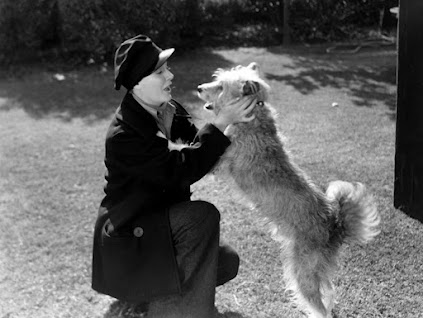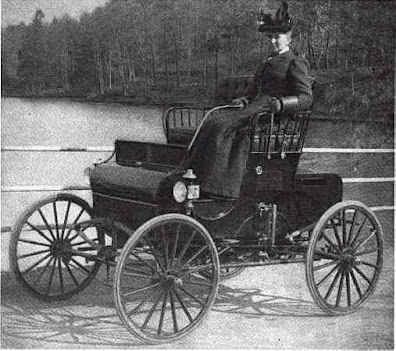The calla lilies are in bloom again...
At the beginning of last week's film, Ellen Wagstaff Arden has been lost at sea (missing; presumed dead) while engaged as the photographer for an anthropological expedition to Indo-China.
While that back-story was obviously developed to establish the premise of the entire film (that she returns after a long absence to find her husband re-married) it is, I think, very notable that her character is shown to have a successful career. Irrespective of the fact that she is supposed to be married with two young children, the (husband-and-wife) writers of My Favorite Wife saw no conflict in depicting a female character who had a life and a vocation that extended beyond her identity as merely wife and mother.
Women in the 1930s were generally seen as people. They were allowed to have ambitions and aspirations that extended beyond "finding a man" and "becoming a mother". It was in the post-war years that mainstream society explicitly attempted to re-define womanhood as something exclusively domestic.
When My Favorite Wife was re-made (very badly) as a vehicle for Doris Day in 1963, the new writers very pointedly changed the circumstances of her disappearance. Irene Dunn's character in the original might have been pursuing her career as a photographer, but Doris Day in the remake was simply accompanying her husband on his business trip (like the dutiful little wife she presumably is). It was apparently inconceivable to show a married woman with an actual career in the 1960s.
But Hollywood movies of the 1930s were practically bursting with ambitious, career-minded women, and our next film is very much a celebration of that.
When I embarked on this current sub-season of Depression/Comedies I promised Cary Grant, Katharine Hepburn and Ginger Rogers in various combinations.We have already seen Cary Grant paired with Katharine Hepburn (and a leopard or two) and we will be seeing Cary Grant with Ginger Rogers in a few weeks. But our next offering marks the only occasion in which Katharine Hepburn and Ginger Rogers appeared together onscreen.
The film was adapted from a highly successful Broadway play, but the screenplay is so radically different from the original stage version that the producers wondered if the finished film should be called "Screen Door".
Whatever you choose to call it, Stage Door is the consummate Depression-era comedy. Featuring razor-sharp dialogue and top-notch performances by some of the leading actresses of the generation, the film successfully captures the grind and the (often brutal) uphill struggle women face as they pursue a career in show-business in the 1930s.
Director Gregory La Cava (who also directed Ginger Rogers in Fifth Avenue Girl, which I screened last month) studied the mannerisms and speech patterns of each of the actresses in the production, and further allowed them to improvise much of their own dialogue. This is why so many of the characters (even the relatively minor ones) seem remarkably well-defined.
The film also features early appearances (very early in one case) of a few notable names who would go on to become heavyweights in the entertainment world.
Lucille Ball (long before she became the most famous face on television) plays Ginger Rogers' friend Judy;
...and Rogers' dancing partner is played by Ann Miller, who would go on to become one of Hollywood's most iconic dancing stars.
Miller was young when she appeared in Stage Door, but no one at the time suspected just how young she actually was. She had lied about her age, so no one on the set realised that she was actually 14 when the film was made.
But the finished film remains one of the strongest "female-centric" films ever to come out of Hollywood - and not only of the Depression era.















Comments
Post a Comment